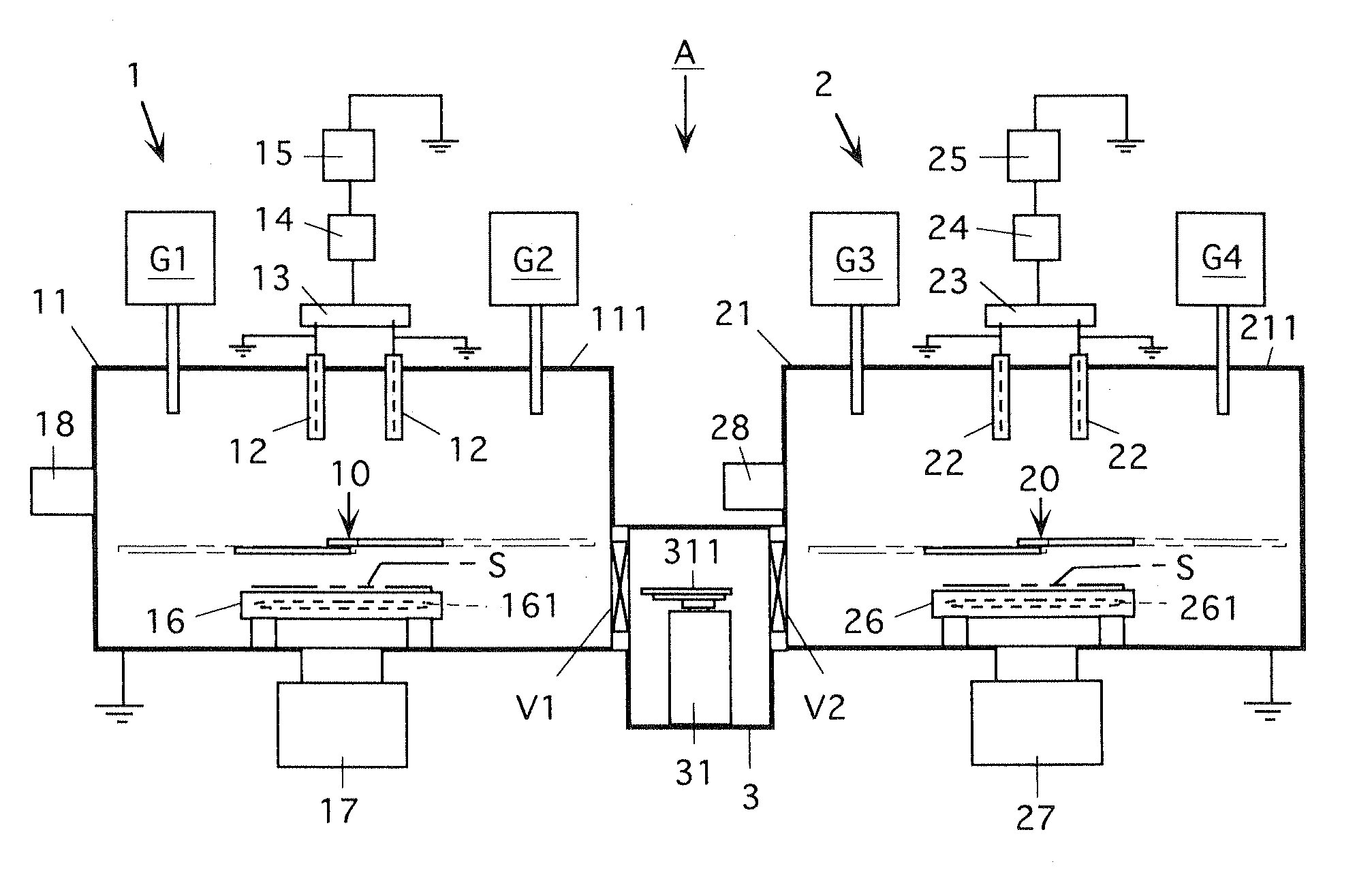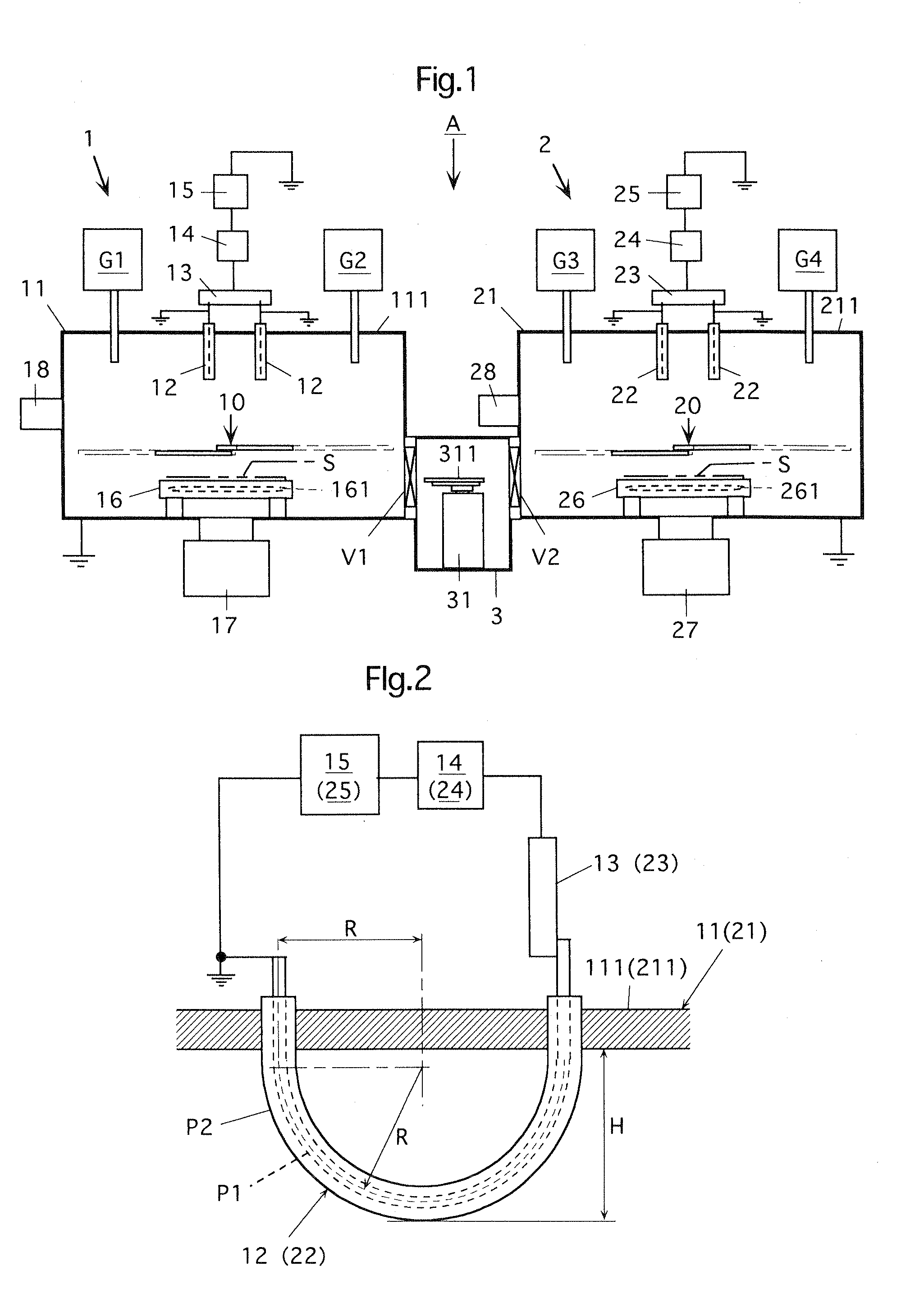Method and apparatus for forming silicon dots and method and apparatus for forming a substrate with silicon dots and insulating film
- Summary
- Abstract
- Description
- Claims
- Application Information
AI Technical Summary
Benefits of technology
Problems solved by technology
Method used
Image
Examples
example 1
[0200](1) To begin with, the substrate S on which a tunnel silicon oxide film is formed by subjecting the surface of a P-type semiconductor silicon substrate as the to-be-processed substrate S to a thermal oxidation treatment in advance is supported on the substrate holder 16 in the plasma producing chamber 11, and the substrate is heated to 220° C. by the heater 161.
(2) The chamber 11 is evacuated by the exhaust device 17 to reduce the pressure inside the chamber 11 to 2×10−4 Pa or lower, and then monosilane (SiH4) gas (0.2 ccm) and hydrogen gas (30 ccm) are supplied into the chamber 11.
(3) While the pressure inside the chamber 11 is maintained to a silicon dot formation pressure of 0.8 Pa (6 mTorr) by supplying the gases and by the operation of the exhaust device 17, high-frequency power of 13.56 MHz and 2000 W is applied to the antennas 12 in a state that the shutter device 10 is closed to cover the substrate S, as shown in FIG. 5, so that formation of inductively coupled plasma ...
example 2
[0211](1) To begin with, the substrate S on which a tunnel silicon oxide film is formed by subjecting the surface of a P-type semiconductor silicon substrate as the to-be-processed substrate S to a thermal oxidation treatment in advance is supported on the substrate holder 19 in the plasma producing chamber 11, and the substrate is heated to 220° C.
(2) The gate valve V1 is opened to evacuate the chamber 11 and path 3′ by the exhaust device 17 and reduce the pressure inside the chamber 11 and path 3′ to 2×10−4 Pa or lower, and then monosilane (SiH4) gas (0.2 ccm) and hydrogen gas (30 ccm) are supplied into the chamber 11.
(3) While the pressure inside the chamber 11 is maintained to a silicon dot formation pressure of 0.8 Pa (6 mTorr) by supplying the gases and operating the exhaust device 17, the substrate holder 19, together with the substrate S, is retracted into the path 3′ by the substrate retracting device 31′ as shown in FIG. 11. In such a state that the substrate holder is ret...
experimental example 1
Formation of Silicon Dots Subjected to Oxygen Terminating Treatment
[0267]Substrate temperature at which silicon dots were formed: 400° C.
[0268]Amount of oxygen gas supplied: 100 sccm
[0269]High-frequency power to antennas 12: 13.56 MHz, 1 kW
[0270]Terminating treatment pressure: 0.67 Pa
[0271]Process time: 1 minute
PUM
| Property | Measurement | Unit |
|---|---|---|
| Thickness | aaaaa | aaaaa |
| Diameter | aaaaa | aaaaa |
| Electrical inductance | aaaaa | aaaaa |
Abstract
Description
Claims
Application Information
 Login to View More
Login to View More - R&D
- Intellectual Property
- Life Sciences
- Materials
- Tech Scout
- Unparalleled Data Quality
- Higher Quality Content
- 60% Fewer Hallucinations
Browse by: Latest US Patents, China's latest patents, Technical Efficacy Thesaurus, Application Domain, Technology Topic, Popular Technical Reports.
© 2025 PatSnap. All rights reserved.Legal|Privacy policy|Modern Slavery Act Transparency Statement|Sitemap|About US| Contact US: help@patsnap.com



